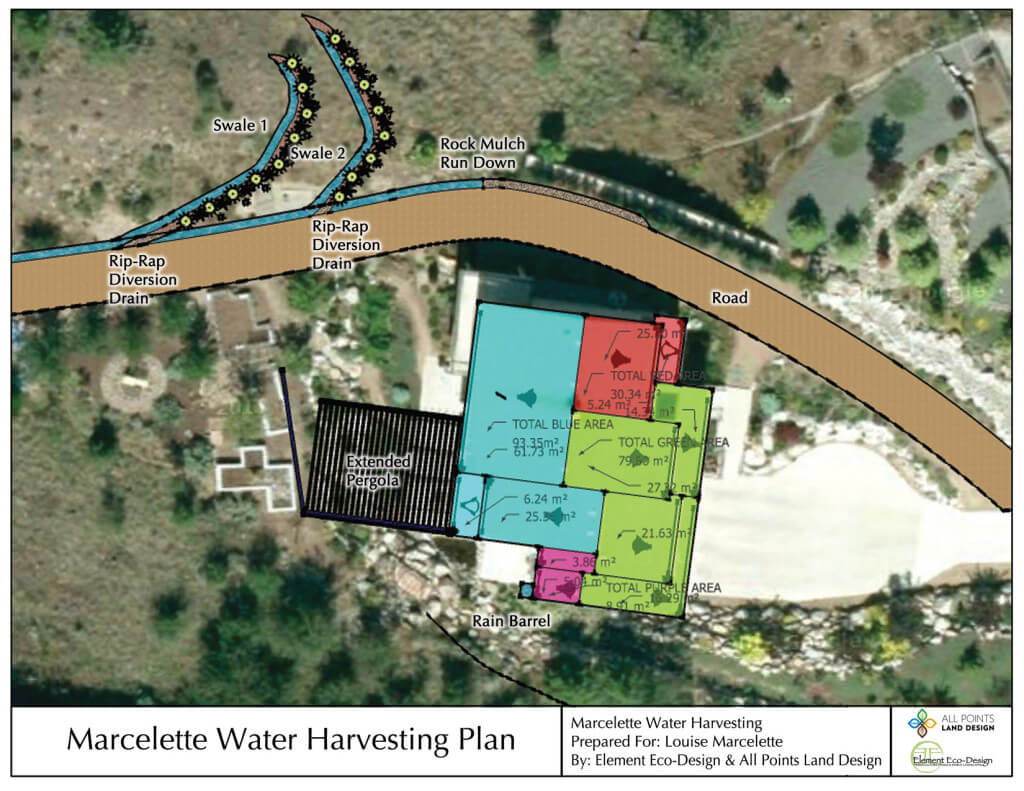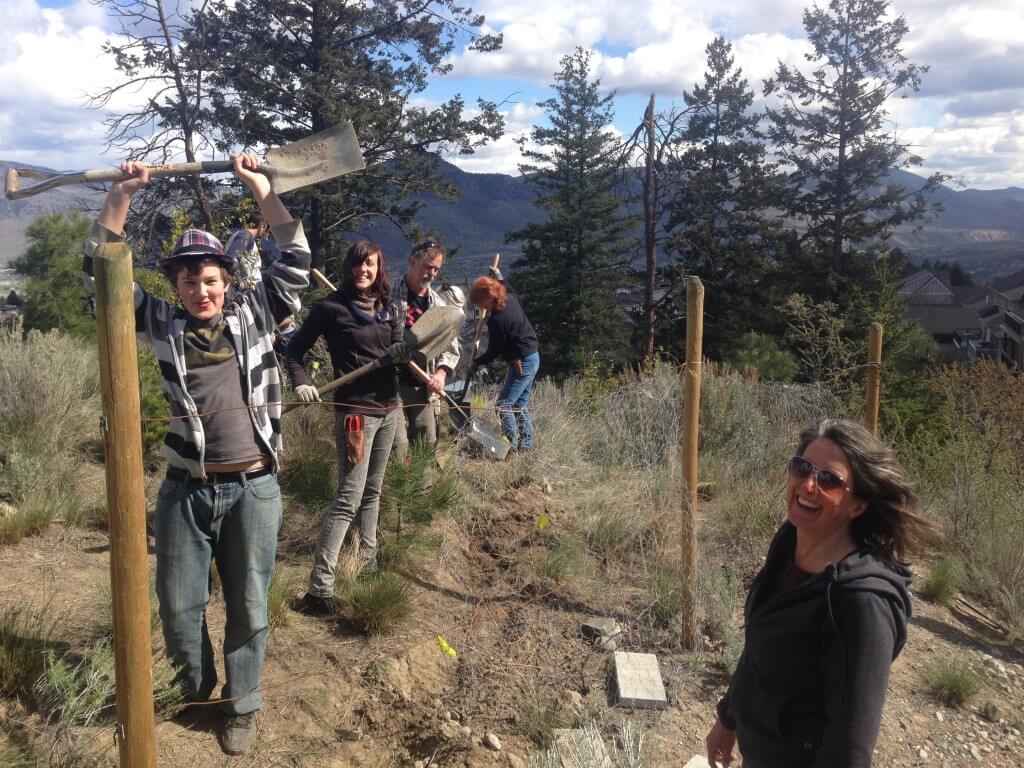Rainwater and Irrigation Analysis
Analysis and earthworks to replace costly irrigation and road repair bills.
Overview
Using half a million litres a year for irrigation of their existing award-winning landscape design, the clients were hoping to reduce their annual bills with rainwater harvesting from the roof of their primary residence. They also wanted to address run-off from the development above; overland water flows had repeatedly washed out a secondary driveway providing access to the back of the property and resulted in costly regrading and addition of road surface material. In general they wanted to demonstrate ecological awareness, raising the bar for other homeowners to use existing sources of water otherwise viewed as waste.
Challenges
Integrating run-off water into an ecological design that would meet or exceed the clients’ irrigation needs for existing and future vegetation was a key challenge. Another was balancing the costs and potential benefits between an expensive, labour-intensive rainwater harvesting system that would provide a clear source of irrigation water; and earthworks that would store water in soils and vegetation, be cheaper and no-maintenance, but not provide an easily accessible storage of water.
Key Elements
- Cost-benefit analysis of residential water consumption showed that at current irrigation levels, rainwater harvesting would be cost prohibitive
- Reduced irrigation substantially with only limited die-back of vegetation, and survival and persistence of site-appropriate species
- Substantial financial savings (>5x) from thorough site analysis and installation of small-scale earthworks, rather than rainwater harvesting system
- Reduced-scale rainwater harvesting installed to top up outdoor pond
- Rolling dips in existing driveways to capture overland run-off, directed to two swales for perennial fruit trees, shrubs and herbs
Update
As expected, there was some vegetation die-back in growth; however, despite a dramatic reduction in irrigation, no plants were lost completely and they continue to increase in hardiness over time (e.g. deeper root systems from less frequent and lighter irrigation). Utility bills are significantly lower, and run-off no longer a problem for either the main or secondary access roads. In the swales, planted vegetation grows abundantly.
More projects
Overflow Raingarden
A raingarden offers the solution to a parking lot’s water overflow problem.
Farm Scale Hugelkultur
A simple technique at farm scale helps a cooperative of farmers boost their productivity.
Berry and Fruit Terrace Orchard
Prolific berry and fruit production on terraces provides income and farm status.
Conservation Hugelkultur Case Study
A workshop and installation of a hugelkultur with a ‘truth window’ into an urban demonstra… Read more »
City Park Food Forest Retrofit
A retrofit design of a city-run dog park into a food forest orchard.
El Pilar Farm Terraces and Water Management
Theft and hurricanes plague this semi-urban farm; the answer was a food de-fence.









